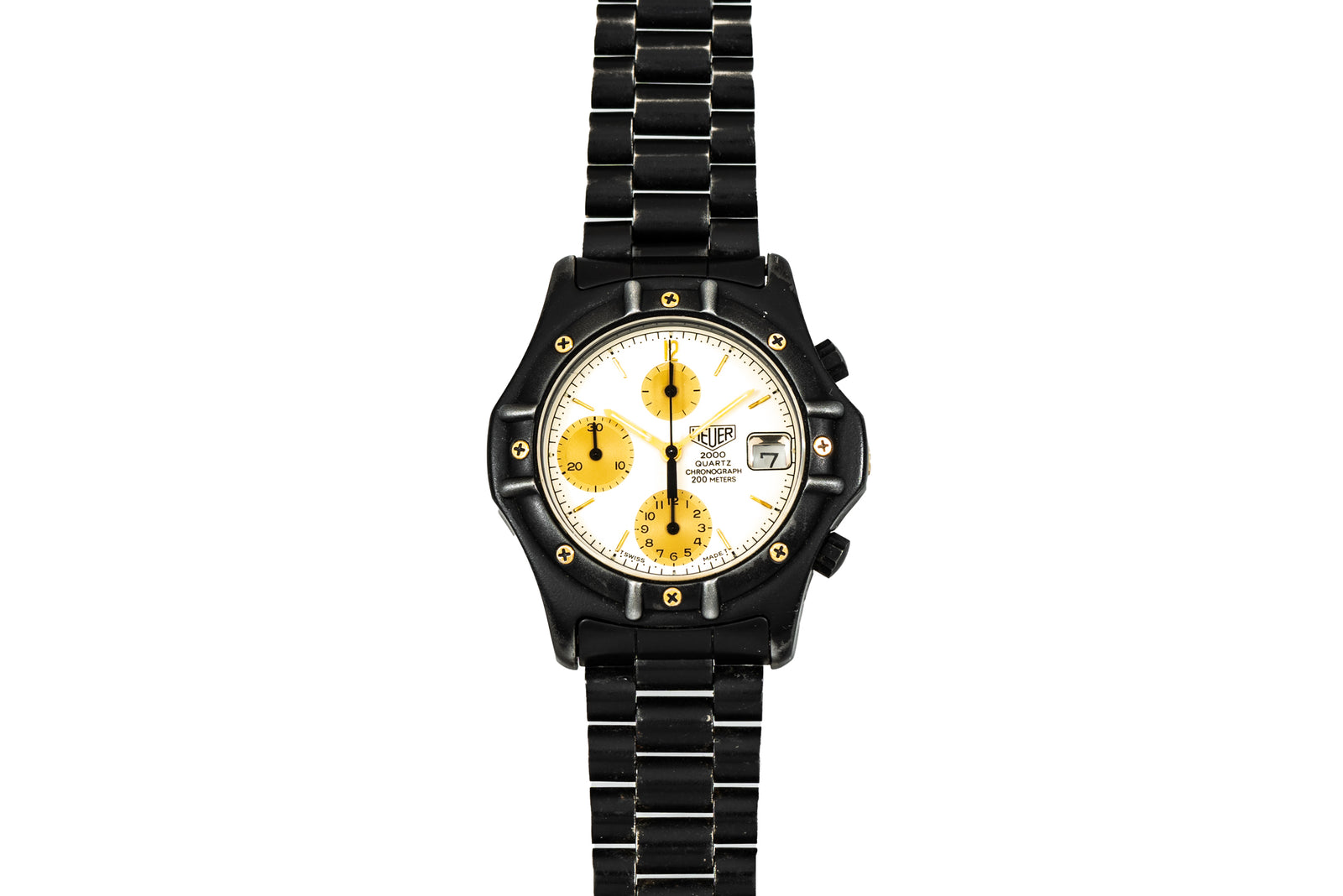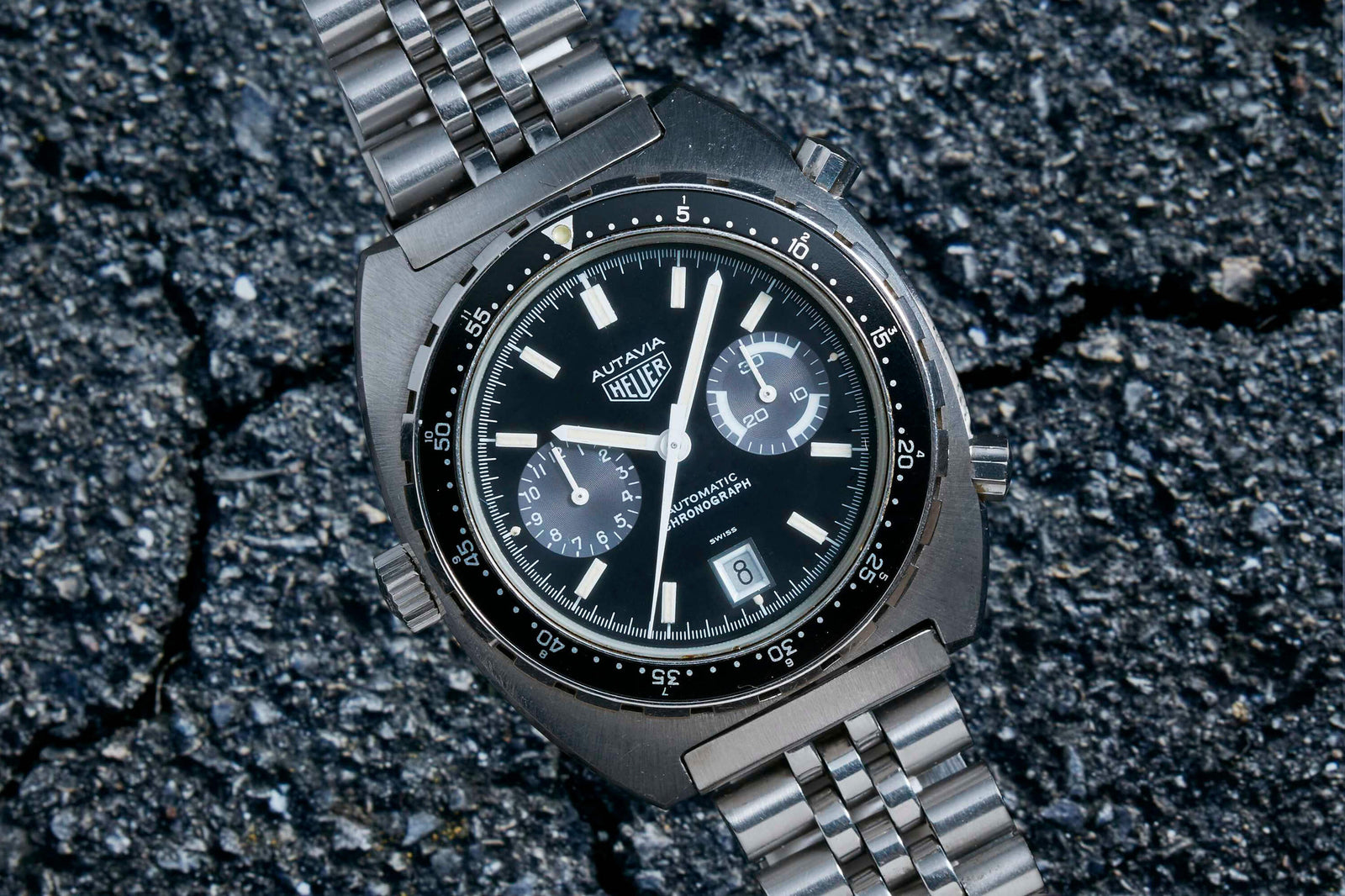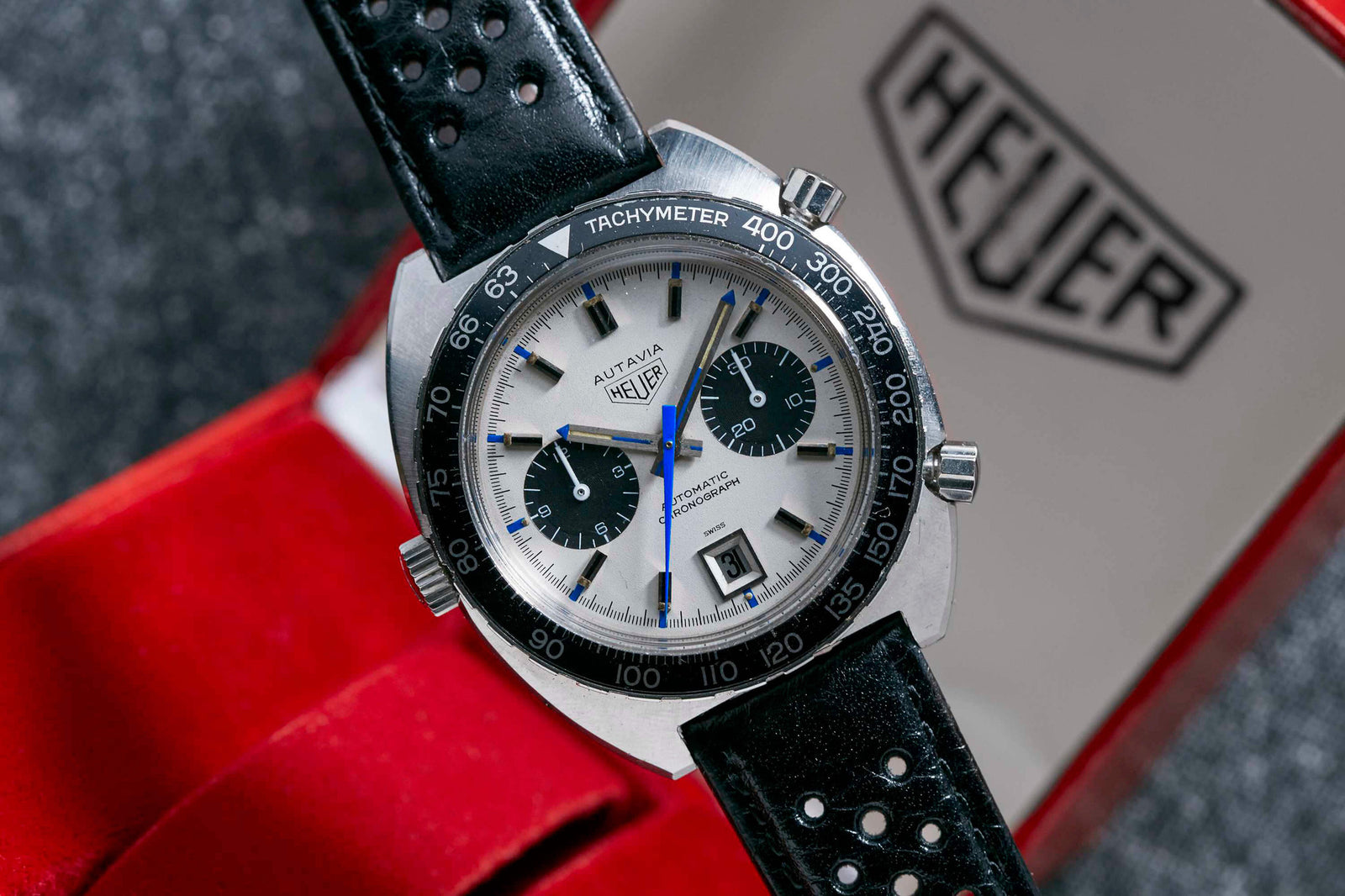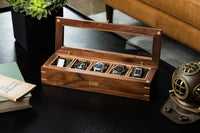Heuer Regatta PVD
- Soldspan>
- Sold
Why We Love it
–
Why We Love it
–Why We Love It
Purpose-built timing instruments are just about the coolest thing in vintage horology.
Its no secret that we have a particular affection for golden-era Heuer around our offices. From the earliest manual-winding Carreras to the oversized PVD-coated Lemania-powered automatics, there is no question that the 60s and 70s were really good for a pre-TAG powerhouse Heuer.
In addition to their main-line chronograph offerings, Heuer, as a master of purpose-driven tool watch design, introduced some pretty interesting timepieces. The Calculator, Solunar, and Mareographe models are all oddball examples of function-first design for engineers, fisherman, and sailors respectively, and are in high demand with collectors today. Perhaps the most iconic specialty timepiece that Heuer ever produced are their Skipper and Regatta models, designed for use in sailboat racing.
If you haven't been out racing your yacht recently, the principle behind a yacht-timer is actually pretty simple. Unlike a race on dry ground, boats are unable to start a race from a dead stop - and short of anchoring, they are rarely standing still. At the start of a regatta, yachts are jockeying for position behind a starting buoy for 15 minutes. At the sound of the starting gun, a countdown is begun and the competing vessels launch past the start line 15 minutes later. Regatta Timers like this one are used to time the countdown onboard, their brightly colored countdown indicators denoting the remaining time when activated.
This particular piece, a Reference 134.601 Regatta is without question the nicest example to come through our doors, with a near mint PVD case, flawless dial and handset, and even a matching "Jubilee" style bracelet. Overall, this is an incredible example of one of Heuer's most unusual vintage chronographs.
You aren't likely to see too many more like this one in your horological travels!
The Heuer Story
In 1962, Jack Heuer inherited the company that his great-grandfather had founded in Saint-Imier nearly a century before.
He had already played a role in the design of some timepieces, starting with the Solunar in the late 1940s. But in 1962, the responsibility of running the company fell on his shoulders, and he found himself faced with the daunting task of safeguarding his ancestor’s legacy while at the same time forging his own. His chosen path? Moving into a line of technical instruments for use in sporting and transportation applications.
The Heuer name was not unknown in motor racing and aviation circles. Starting in 1911, when the sport of automobile racing was still in its infancy, the company produced dashboard clocks for cars, boats, and even airplanes. Jack Heuer, a longtime racing aficionado, saw an opportunity to revitalize—or at the very least reexamine—the company’s already-successful line of chronographs.
He had first tried his hand with the Autavia, which at the time of his succession was a stopwatch with a virtually illegible dial. In its place he launched the line of Autavia wrist chronographs, the first line of chronographs produced by Heuer to be named, not just numbered. The Autavia was purpose-built for racers and pilots, and attracted the attention of Formula 1 racers and devotees such as Jochen Rindt and Steve McQueen.
In designing the Carrera, Heuer created something that was entirely his, and is without question the chronograph that is most associated with the brand today. Heuer's obsession with legibility led to a dial design that was simpler to read than the Omega Speedmaster or the Rolex Daytona (released the same year as the Carrera). What resulted was a chronograph that gave only the most necessary bits of information, with plain baton markers: clean, uncluttered, undeniably attractive.
The brand grew to become a powerhouse in chronographs in particular, and the list of famous designs from the 1960s and 1970s can’t be counted on two hands. Falling on hard times in the wake of the Quartz Crisis, Heuer was ultimately purchased by Technique Avant Garde (TAG) and subsequently Louis Vuitton Moet Hennessey, who have brought the brand into the modern age.
A:S Guarantee
+
A:S Guarantee
+Our Pledge
Analog:Shift stands behind the authenticity of our products in perpetuity.
Condition
Since our pieces are vintage or pre-owned, please expect wear & patina from usage and age. Please read each item description and examine all product images.
Warranty
We back each Analog:Shift vintage timepiece with a one-year mechanical warranty from the date of purchase.
International Buyers
Please contact us prior to purchase for additional details on shipping and payment options.
Shipping & Returns
+
Shipping & Returns
+All of our watches include complementary insured shipping within the 50 states.
Most of our products are on hand and will ship directly from our headquarters in New York City. In some cases, watches will be shipped directly from one of our authorized partners.
We generally ship our products via FedEx, fully insured, within 5 business days of purchase. An adult signature is required for receipt of all packages for insurance purposes. Expedited shipping is available at an additional cost. We are also happy to hand deliver your purchase in Manhattan or you may pick it up at our showroom.
Returns must be sent overnight or by priority international delivery, fully insured and paid for by the customer. A restocking fee may apply. Watches must be returned in the same condition as initially shipped.
We welcome international buyers, please contact us prior to purchase for additional details on shipping and payment options.








Heuer Regatta PVD
- Soldspan>
- Sold







































